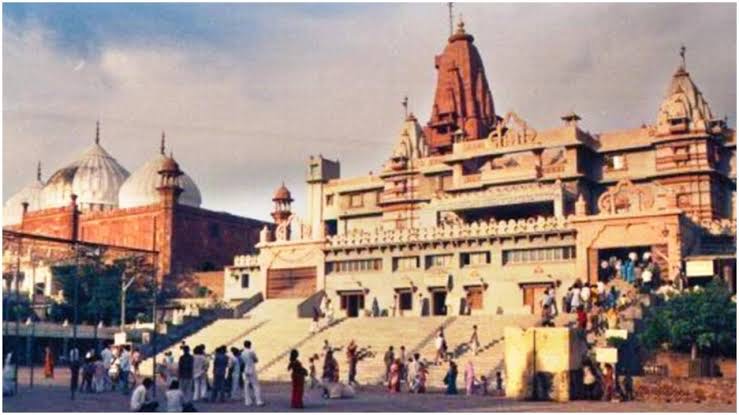
A petition has been recently filed in the Court regarding getting free possession of 13.37 acres of land at Mathura which was the birth-place of Shrikrushna and for removal of Shahi Idgah mosque which has been encroaching this land. Every Hindu must have remembered the history of 500 long years of struggle on this occasion in connection with the ‘Ram Janmabhoomi’ movement. Hindus won the ‘Ram Janmabhoomi’ case with the grace of Bhagavan Sriram despite many obstacles which came in the way so also purposely created. It led to arousing hopes amongst Hindus’ of the release of Shrikrushna Mandir of Mathura and Sri Vishwanath Mandir of Kashi from the clutches of encroachment through Islamic constructions. Now, with the filing of this petition, it is a step taken towards fulfilment of such hopes. It has also created a new energy in Hindus.
The place, where Shrikrushna Mandir is located, was known as ‘Mallapura’ region during the regime of Kansa. Kansa’s jail was here and at this historic place, Bhagavan Shrikrushna, who is the eighth incarnation of Lord Vishnu, was born. Millions of Hindus from all over the world therefore, feel connected to this place. The demonic cruel King Aurangzeb demolished this temple in the year 1669 and built Shahi Idgah (place for reading ‘namaz’) here. The petition has been filed to remove this encroachment.
Blunders committed by the Congress Party !
The shadow of Islamic invaders started falling about 1300 years ago on Bharat and consequently on Hindus, still exists through the medium of various memorials built all over the country. The places of pilgrimage of Hindus like Ayodhya, Kashi and Mathura are some of its examples; but the fact is, there are thousands of mosques built over temples in different parts of this country. After getting independence, Congressmen should have handed over Hindus’ places of worship to Hindus; but the Congress didn’t rule this country as representatives of Hindus rather it ruled as the descendants of the British. As such, Hindus’ temples and land grabbed by Islamic invaders have not been returned to Hindus till now. Of course, the Congress never even made any efforts in that direction.
The fanatic descendants of staunch anti-Hindu Islamic invaders like Babar, Aurangzeb, Tipu Sultan etc have been traditional voters of Congress; therefore, Congress preferred to crucify Hindus religious sentiments for nurturing religious sentiments of the descendants of these of Islamic invaders. Moreover, Hindu-hatred exhibited by Congress doesn’t end here. In 1991, to stop Hindus from getting back their places of worship, which were earlier grabbed by Islamic invaders, the then Congress Government led by Prime Minister P. V. Narasimha Rao passed ‘Places of Worship (Special Provisions) Act 1991’ under which it was decided to maintain status-quo of all places of worship. It was stated in this Act that barring Ayodhya, the position of worship places as on 15th August 1947 would be maintained. No place of worship of one religion can be converted to a place of worship of another religion as per this Act. Decisions regarding Mathura, Kashi etc are therefore, pending. For maintaining its vote-bank and for giving protection to its voters under law, the Congressmen have committed a blunder and sin of preventing Hindus from getting back their places forcibly taken over by Islamic invaders. History will never forgive such anti-Hindu Congress for the same.
It will be the spiritual practice of Hindus in present times, to extend their support. In fact, it is quite shameful that in India, which is a country with a majority of Hindus, Hindus have to file petitions for their legal rights. It is necessary for the Government to consider such issues at their level.
Need for Hindus’ strength of unity !
A. The demand for the release of ‘Krishna Janmabhoomi’ is gaining momentum. On 23rd July 2020, Saints and Seers have set up ‘Krishna Janmabhoomi Nirman Nyas’. 13 ‘Aakhadas’ from all over India have also come forward for the demand of release of ‘Krishna Janmabhoomi’ who recently held a meeting in this context.
B. A plea was filed in the court of Civil Judge Senior Division Chhaya Sharma in Mathura district, by Supreme Court advocates Harishankar Jain and his advocate father, His Holiness Hari Shankar Jain on behalf of Shri Krishna Virajman. They have challenged the ‘Places of Worship (Special Provisions) Act, 1991’. In the petition, a claim has been filed on the land on which The Shahi Idgah Mosque stands next to Krishna Temple at Katra Keshav Dev, Mathura. Read More
Krishna Janmabhoomi-Idgah Row: Court admits Hindu Groups’ plea, matter to be heard on Sept 30. On Sept 30, Court to take a call on maintainability of plea.
The plea seeks removal of mosque at the site.
Harish, Prashant with details. pic.twitter.com/oC4dpZkQi1
— TIMES NOW (@TimesNow) September 28, 2020
The petitioners have asserted in the petition that Mughul invader Aurangazeb had demolished the Krishna temple in Mathura during his rule. The temple that stood at the birthplace of Lord Shree Krishna at Katra Keshav Dev was demolished in 1669-70. The existing Eidgah was built on the plinth of the Krishna Janmabhoomi temple. The petitioners have asked to court to transfer the ownership of 13.37 acres of land to Shri Krishna Virajman.
C. A civil suit has been filed by petitioner Vinit Jain on behalf of Srikrishna Virajman in a Mathura court seeking the ownership over entire 13.37 acres of Krishna Janmabhoomi land in Mathura and also sought the removal of Shahi Idgah Masjid. Read More
The suit states that "every inch of land of Katra Keshav Dev is sacred for the devotees of Lord Shree Krishna and Hindu community."#MathuraCourt#KrishnaJanmabhoomi
— Bar & Bench (@barandbench) September 26, 2020
Many pro-Hindu organizations are working too on this issue in their own way.
However, the major roadblock for the Hindus to reclaim its spiritual and cultural sites that have been lost due to Islamic conquest in the past comes in the form of Places of Worship (Special Provisions) Act, 1991, which was passed by the then PV Narasimha Rao government. The controversial law prohibits conversion of places of worship – like churches, mosques and temples – into places of worship of a different religion.
D. Former chairman of Shia Waqf Board, Wasim Rizvi, on Monday urged Prime Minister Narendra Modi to abrogate the Places of Worship Act, 1991 calling it a law brought by the then Congress government to appease the Muslims. He also suggested that temples demolished by Mughal emperors should be rebuilt and mosques which stand there should be removed. Read More
It is therefore, the duty of 100 crores Hindus to strongly extend support to them. Chhatrapati Shivaji Maharaj protected many temples from Islamic aggressors. The poet Kulbhushan has aptly described the valour exhibited by Chhatrapati Shivaji Maharaj as he has said in his verses that ‘the art of Kashi would have been destroyed, Mathura would have become a mosque; if Shivaji Maharaj was not there at that time, everyone would have been circumcised’. Releasing of ‘Krishna Janmabhoomi’ in a lawful manner will be an act as expected by Chhatrapati Shivaji Maharaj.
On the other hand, it is the duty of the State and Union Governments to see to it that like ‘Ram Janmabhoomi’ case, Krishna Janmabhoomi case would not get delayed. The Government should pay special attention not to procrastinate in this matter at their level when all proofs are available with them. All unjust laws should therefore, be immediately quashed and this case should be heard in fast-track Court so that Hindus would get back their ‘Krishna Janmabhoomi’. It is the unanimous demand of all Hindus.
What is the Places of Worship Act 1991 ?
Why was it enacted in 1991? What was the cut-off date? Why was the Ayodhya site left out of its ambit?
When the Babri Masjid-Ram Janmabhoomi dispute was at its height, in the early 1990s, the Vishwa Hindu Parishad (VHP) and other Hindu organisations also laid claim to two other mosques — the Gyanvapi mosque in Varanasi and the Shahi Idgah in Mathura. Although the radicals in the Hindu camp often spoke of reclaiming 3,000 mosques across the country, they threatened to start agitations only in respect to these two places of worship. In this backdrop, the P.V. Narasimha Rao government enacted, in September 1991, a special law to freeze the status of places of worship as they were on August 15, 1947. The law kept the disputed structure at Ayodhya out of its purview, mainly because it was the subject of prolonged litigation. It was also aimed at providing scope for a possible negotiated settlement.
What is the objective of the Act?
The aim of the Act was to freeze the status of any place of worship as it existed on August 15, 1947. It was also to provide for the maintenance of the religious character of such a place of worship as on that day. It was intended to pre-empt new claims by any group about the past status of any place of worship and attempts to reclaim the structures or the land on which they stood. It was hoped that the legislation would help the preservation of communal harmony in the long run.
“We see this Bill as a measure to provide and develop our glorious traditions of love, peace and harmony,” the then-Home Minister, S.B. Chavan, said in the Lok Sabha on September 10, 1991. “The country’s tradition of amity and harmony came under severe strain during the pre-Independence period. After Independence, we have set about healing the wounds of the past and endeavoured to restore our traditions of communal amity and goodwill to their past glory,” he said. The Congress had promised such legislation in its manifesto for the 1991 Lok Sabha election. The President’s address to Parliament also contained a reference to it.
What are its main features?
The Act declares that the religious character of a place of worship shall continue to be the same as it was on August 15, 1947. It says no person shall convert any place of worship of any religious denomination into one of a different denomination or section. It declares that all suits, appeals or any other proceedings regarding converting the character of a place of worship, which are pending before any court or authority on August 15, 1947, will abate as soon as the law comes into force. No further legal proceedings can be instituted.
However, there is an exception to the bar on instituting fresh proceedings with regard to suits that related to conversion of status that happened after August 15, 1947. This saves legal proceedings, suits and appeals regarding chance of status that took place after the cut-off date. These provisions will not apply to ancient and historical monuments and archaeological sites and remains that are covered by the Ancient Monuments and Archaeological Sites and Remains Act, 1958; a suit that has been finally settled or disposed of; and any dispute that has been settled by the parties or conversion of any place that took place by acquiescence before the Act commenced. The Act does not apply to the place of worship commonly referred to as Ram Janmabhoomi-Babri Masjid in Ayodhya. This law will have overriding effect over any other law in force, it said.
Is there any penal provision in the Act?
Anyone who defies the bar on conversion of the status of a place of worship is liable to be prosecuted. The Act provides for imprisonment up to three years and a fine for anyone contravening the prohibition. Those abetting or participating in a criminal conspiracy to commit this offence will also be punished to the same extent, even if the offence is not committed in consequence of such abetment or as part of the conspiracy.
How did the Opposition react to the law then?
The Bharatiya Janata Party (BJP) registered its strong opposition to the enactment. The BJP leadership denounced the Bill as another example of the “pseudo-secularism” being practised in the country. It saw in it an intention to appease the minorities. In Parliament, the BJP also questioned Parliament’s legislative competence to enact the law as it pertained to places of pilgrimages or burial grounds, which were under the State List. However, the Union government said it could make use of its residuary power under Entry 97 of the Union List to enact this law.
Source : The Hindu

 Md Farooq Sheikh from Gujarat poses as an army major to smuggle liquor from Maharashtra
Md Farooq Sheikh from Gujarat poses as an army major to smuggle liquor from Maharashtra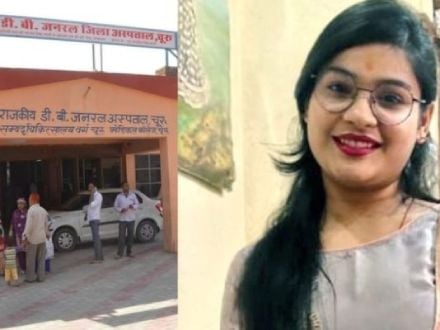 Rajasthan: Woman found hanging at a beauty parlour, Arshad, 3 others booked
Rajasthan: Woman found hanging at a beauty parlour, Arshad, 3 others booked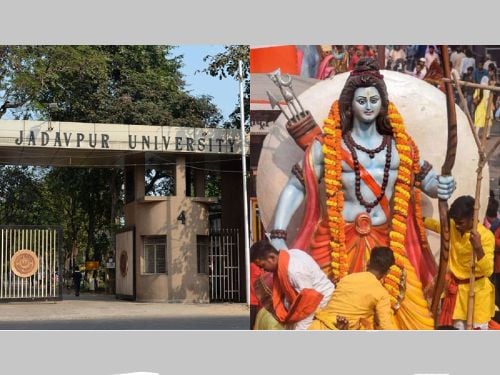 Jadavpur Univ revokes permission to celebrate Ram Navami on campus after granting it
Jadavpur Univ revokes permission to celebrate Ram Navami on campus after granting it Andhra Pradesh: Farooq kills mentally challenged Hindu man for insurance money
Andhra Pradesh: Farooq kills mentally challenged Hindu man for insurance money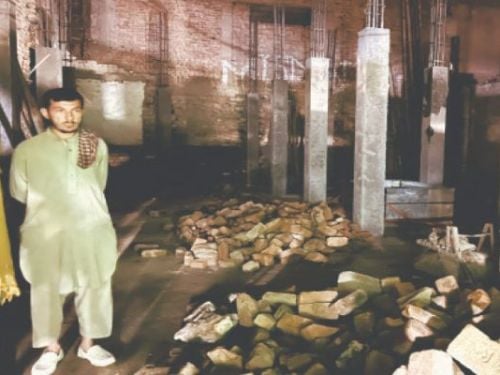 Pakistan: Ancient Hindu temple in Khyber Pakhtunkhwa demolished for commercial complex
Pakistan: Ancient Hindu temple in Khyber Pakhtunkhwa demolished for commercial complex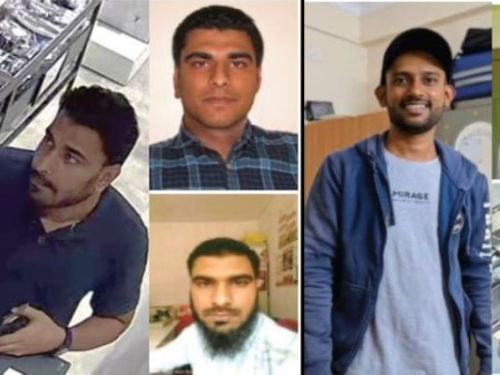 Rameshwaram cafe blast: NIA arrests bomber Mussavir and mastermind Abdul
Rameshwaram cafe blast: NIA arrests bomber Mussavir and mastermind Abdul